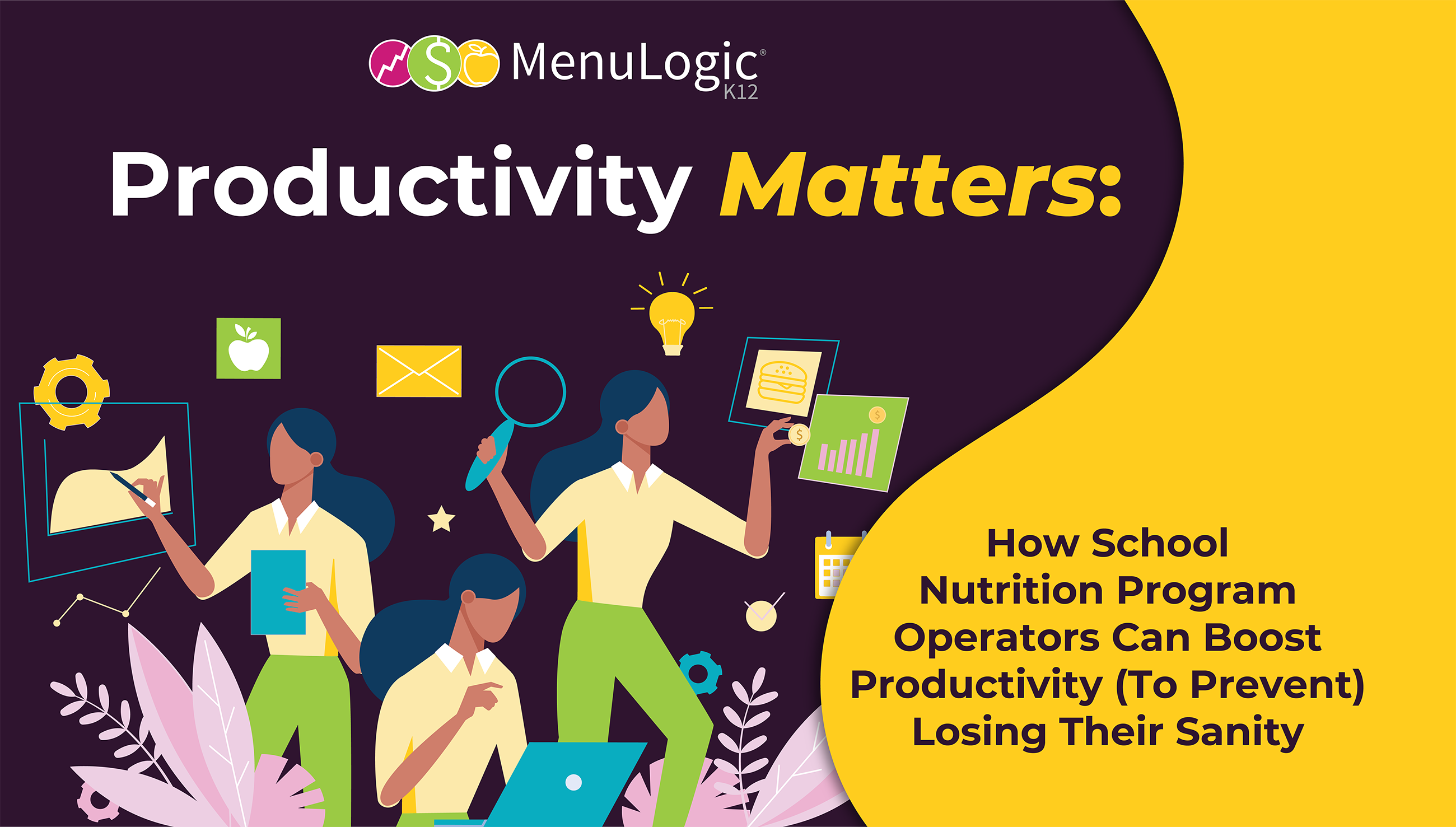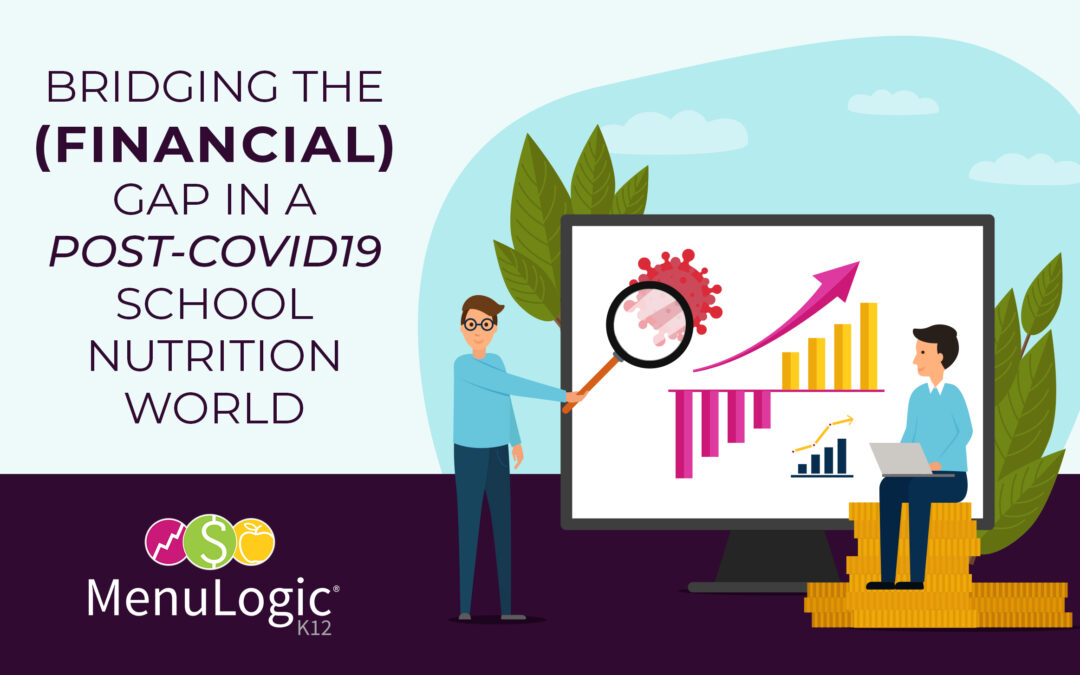As schools across the country in the spring of 2020 closed their doors – also closed were the doors to school cafeterias. For school districts operating National School Lunch Program (NSLP) and School Breakfast Program (SBP), this meant that those programs’ planned revenue dropped to 0 for the remainder of the school year. For school districts closed in March, that meant approximately 40-50 planned operating days were no longer going to happen.
Our programs have expenses whether we are open and able to generate revenue or not. For many districts, labor expenses continued to be paid with no offset in revenue. For probably all districts, other overhead expenses continued (staff benefits, utilities, equipment purchases and repairs, contracts with vendors of chemicals, technology, waste/recycling, more). These overhead expenses depend upon those 180 (give or take depending on district) school days per year to generate enough revenue to cover those days’ allocated costs.
In SY 19-20, those 180 days dropped to 130-140. Every operating day is an opportunity. Losing 30-40 days is losing 30-40 opportunities we were counting on.
Let’s take a look at the math. (Side note – I love math, you’ve been warned!)
Take the following example for “XYZ District”. To calculate average daily labor / overhead costs:
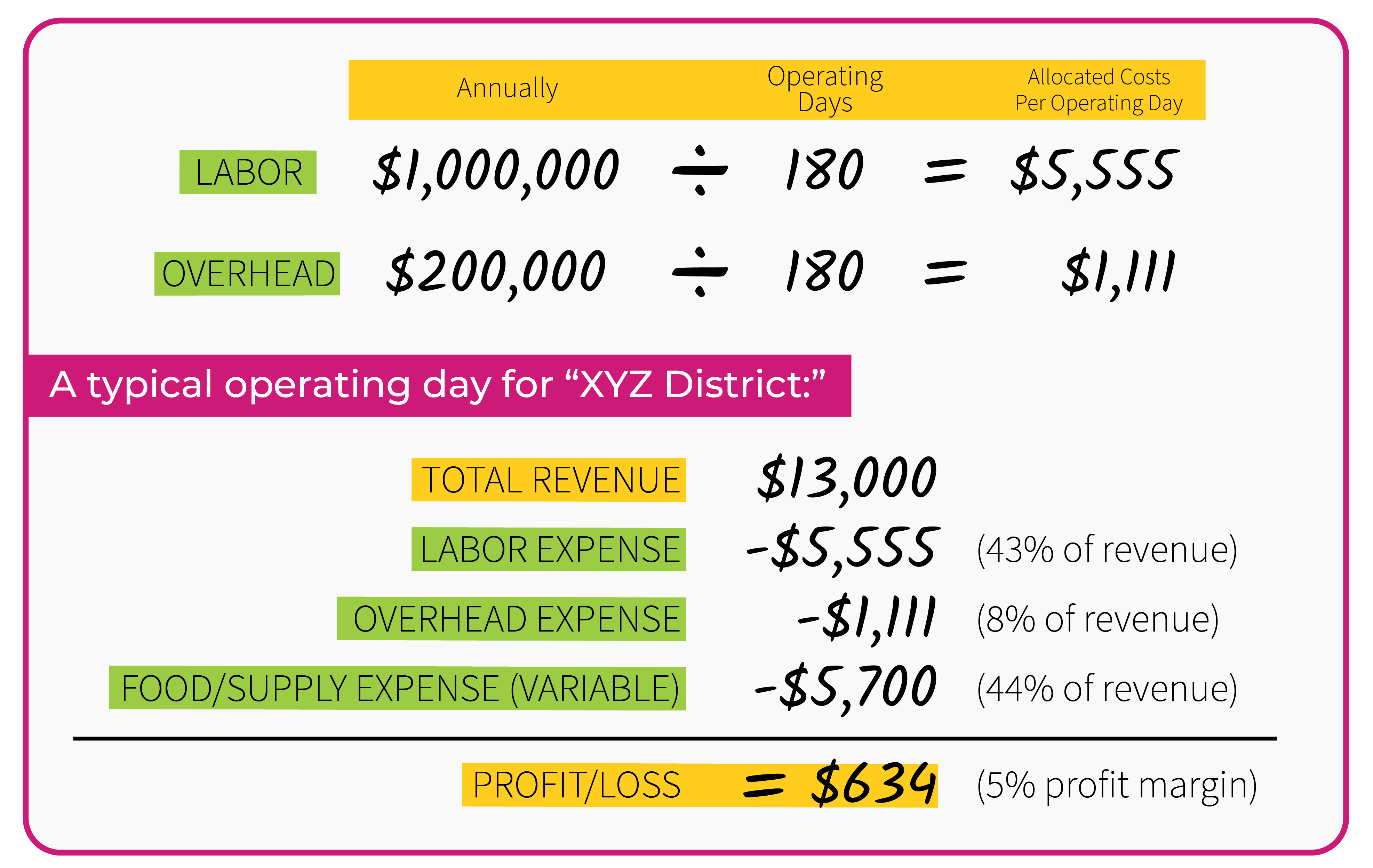
Now, let’s close school for 40 days and recalculate those average daily labor / overhead costs:
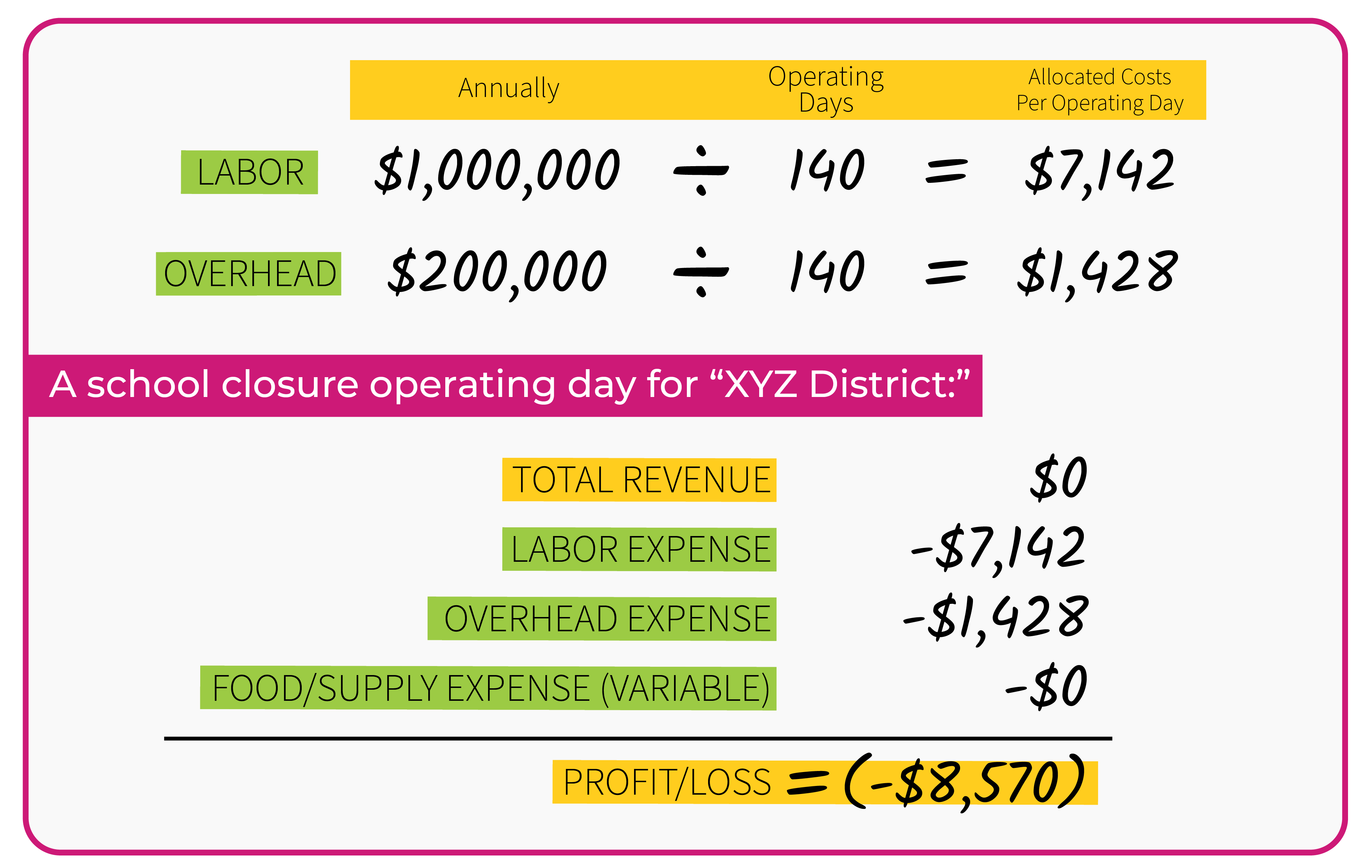
Ugh. That is a bummer. I don’t see myself as a “doom and gloom” sort of person. There is always a way forward and I refuse to focus only on the challenges of this situation instead of the solutions. For many districts, school closure feeding plans were immediately put into action. Teams across the country sprang into action to assemble non-traditional feeding programs that have been nothing short of miraculous – for the students, families, and communities they are serving. As in everything we do as school nutrition professionals, the first thought and priority is to feed the kids. Financial impact is always in our minds – but feeding the kids comes first. So after the kids were/are being fed and our school closure programs were/are up and running – what is that financial impact?
Well, a positive note is that closure feeding programs meant we have some (if not all) of those operating days (remember, every day is an opportunity) back!
So let’s assume we got 30 of the 40 days back:
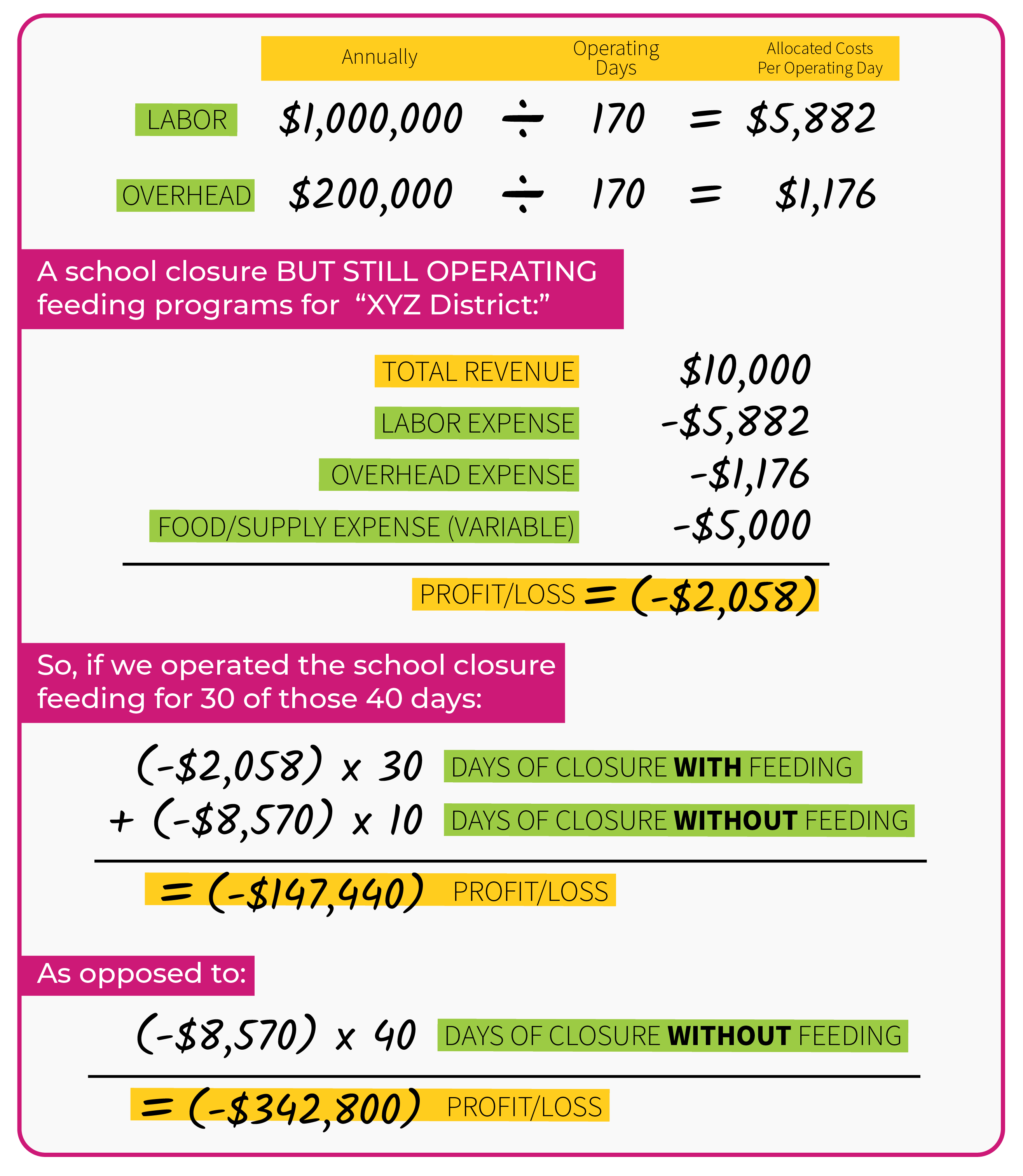
What do all of these numbers mean?
To summarize all of the above: school closure feeding programs might have helped offset some, but not all, of the losses that the extended school closures caused school nutrition programs. Districts who had higher participation in programs or lower labor/overhead costs to offset might have come out better than the above scenario example. Districts with no feeding programs and higher overhead costs would have come out worse. The amount of additional money necessary for PPE, supplies, equipment to operate these programs only added to the losses. Regardless, we can all agree that SY 19-20 did NOT end how we hoped – not for our students, our staff, or our bottom line.
How do we move forward from this?
So – as we continue our feeding programs into the future – what’s next (financially speaking)? As a self-described “numbers person,” I personally find comfort (and the key to much of our program’s success) in simply knowing and monitoring some of our district’s *key* numbers. But – like all of us – I’m really busy, with you know – all the things that have to be done to feed kids and stuff. I don’t have time to create, update, or even just open/close 57 spreadsheets a week and take a quick peak. And even if I did – am I going to change ANYTHING about what my program is doing as a result of those 57 quick peaks? Don’t get me wrong – I love spreadsheets. Like, really love them. I’ve had no less than 5 of my best work friends text me a picture of a version of this shirt they think I should buy:

But spreadsheets can only do so much (by so much I mean not even close to enough) when we are looking at our finances from both a macro (how much profit or loss did I have today) to a micro (what food items / menu decisions resulted in me having that much profit or loss today) level.
The future as I look ahead to the quickly approaching beginning of SY 20-21 doesn’t have to look grim. We will have students and those students will miss our food, our team, their school. They will be looking to us to provide some comfort to them as they return to their “somewhat normal.” Many will continue to be looking to us to provide the only meals they eat that day. Many will be so happy to get to enjoy our food again instead of the food they are eating every day at home (my 7 year old daughter has put herself in this group).
We will continue to serve our students, their families, and our communities to the absolute best of our abilities. Will those abilities be tested as we navigate the various feeding models and potential upcoming closures? Probably. Would those abilities be easier if USDA extended waivers that allowed us to operate on SSO or SFSP? Absolutely.
But our role as leaders of school nutrition programs includes the responsibility to figure out how to navigate these financially unstable waters. If we want to continue to “feed the kids,” we will need to first and foremost know our numbers and the impact the decisions we make have on those numbers. This means focusing our precious time on the numbers that matter – the numbers that we can impact and change with the decisions we make.

